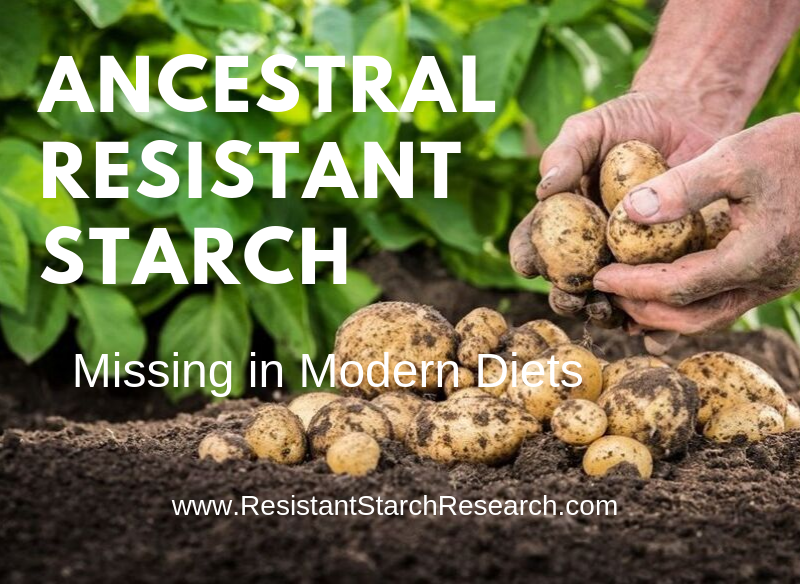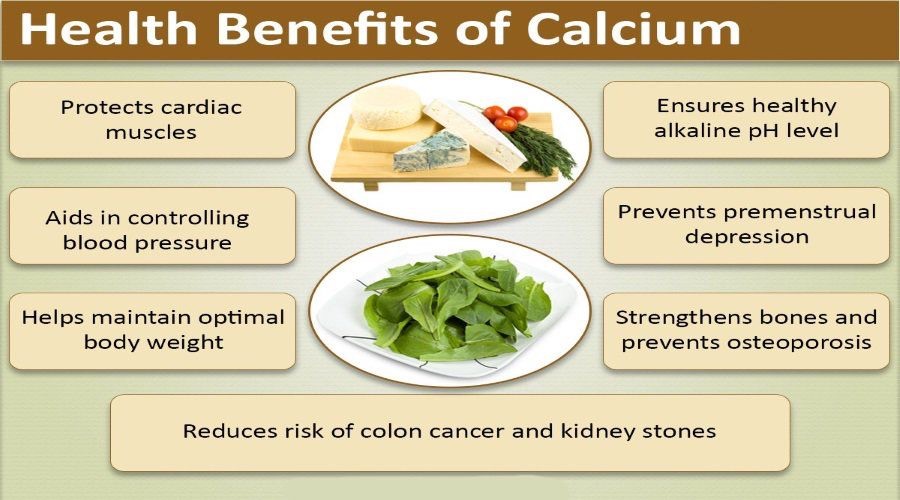
By Prof. Raphael Nyarkotey Obu
resistantstarchresearch.com.
Starch has always been part of our food. It was a major component in ancestral diets and it is still a major in today’s food. Starch-based foods constitute the five largest food crops around the world: maize, wheat, rice, potatoes, and bananas. Notwithstanding stories and claims by advocates of the Paleolithic and other “caveman” diets, people have always consumed starchy foods.
After reading this important article and conducting extensive studies on resistant starch diets on our health, I realized that we have been lied to that starchy foods are not good for our health. I had to readjust my diet after reading about the numerous benefits of resistant starch. The resistantstarchresearch.com article on resistant starch which I am reproducing here is worth reading:
Resistant starch, therefore, has always been part of our diet. It has been estimated that 4-10% of starch in foods resists digestion and reaches the large intestine. (Cassidy 1994). Intact whole grains and raw starches are excellent sources of Type 1 and Type 2 resistant starch. Intact and coarsely ground grains contain a significant amount of resistant starch because the attached plant material encases the starch and slows down its digestion. With milling, the particle size of the grains is reduced, the protective barrier is removed and the amount of resistant starch is greatly diminished, as the starch becomes more easily digested. Thus, intact whole grains contain resistant starch but refined whole grains do not. Cooked and cooled starchy foods also provide Type 3 retrograded resistant starch. (See the FAQ for additional information on the types of resistant starch.)

Maize diets can be found in type 3 resistant starch
Historically, people ate 30-50 grams of resistant starch per day. Instead of an abundant quantity of hard-to-digest carbohydrates, most of today’s carbohydrates are high glycemic and easily digestible. This was a marketing pitch in the 1940s – New Era Scientifically Processed Potato Chips advertised that they were “more readily digested”.
In the 1940s, more digestible food was seen as a benefit!
These marketing campaigns worked as people steadily moved to the convenience and ease of processed foods. Today, people consuming today’s Western-style diets typically consume only 3-8 grams of resistant starch per day. (Platel 1994, Brighenti 1998, Liljeberg 2002, Murphy 2008). Resistant starch intake in Chinese adults was calculated to be higher at 14.9 grams/day with cereal and tuber products contributing the most. (Chen 2010)
Over the centuries, our diet of slowly digestible and resistant starch became more and more digestible. Now, we are discovering the detrimental health consequences of this shift in our starch consumption.
Starchy Foods in History
There is an abundant amount of data supporting ancestral starch. The Neanderthals in France used tools to dig starchy roots out of the ground and regularly consumed these starchy foods approximately 125-250,000 years ago. (Hardy 2011). Food residues from Upper Paleolithic sites dated 30,000 years ago show that the grinding of starchy roots and rhizomes into flours and foodstuffs was common practice. (Jaminet, p. 11) Our hominid ancestors were eating savanna tubers, roots, and corms – foods similar to our modern potato and taro. (Yeakel 2007)
Australian Aboriginal bushfoods contained numerous roots, corms, nuts, and tubers, including long yam, cheeky yam, native arrowroot, and bush potato. When prepared through traditional methods, these foods were more slowly digested and contained more resistant starch compared to Western foods commercially available today. (Thorburn 1987)
Pacific Islander foods included breadfruit, taro, and sweet potatoes. (Thorburn 1987) Yams, a staple food in the South Pacific islands for thousands of years, were typically peeled, boiled, and mashed, or dried and ground into a powder that could be cooked into a porridge. (Tedder 1974).
Natives of Mexico farmed corn as early as 5000 B.C., and shortly after, beans and squash. (Schenone 2003) The oldest known cobs of maize were discovered in Bat Cave, New Mexico, and are believed to have been laid there since 3600 B.C. Maize, beans, and squash were planted together around 800 A.D. in what is now known as Illinois. These “Three Sister” crops provided surplus food that created an expanded population throughout the extended Mississippi River valley and tributaries, for hundreds of years. Their importance to American agriculture was commemorated on the 2009 Native American $1 coin.
Traditional African diets have long included a stiff porridge. This porridge was usually made with sorghum or millet before the sixteenth century when corn (maize) found its way from the Americas to Africa (Maize & Porridge). Today, maize porridge remains a staple in traditional African diets. It is known by many names, including nshima in Zambia, ubwali in Bemba, sadza in Zimbabwe, and ncima in Mozambique. Often, it is cooked in the morning and eaten throughout the day and is rich in retrograded resistant starch (RS Type 3). A recent clinical study reported that traditional South African diets contain 28 grams/day of dietary fiber plus an estimated 38 grams of resistant starch/day through foods such as putu, a maize porridge. (O’Keefe 2015).
Wild potatoes originated in the Andes mountains of South America – they were domesticated and cultivated approximately 7,000-10,000 years ago and provided a principal energy source for the influential Inca civilization. Not only did the Incans use potatoes as a staple crop, but they also dehydrated them and used it as a rescue food in case of crop failure. (Chapman) Potatoes were introduced to Europe in the second half of the 16th century by the Spanish. They helped to stabilize access to food. For instance, in France, before the widespread adoption of potatoes, French farmers were barely able to feed the population, with at least 40 outbreaks of serious, nationwide famines between 1500 and 1800. Potatoes produced more food per acre than wheat, survived the destruction of above-ground crops by soldiers during wars, and were used as insurance against crop failure. By the end of the Napoleonic Wars in 1815, the potato had become a staple food in the diets of most Europeans. (Chapman)
Barley has been used as a staple in Tibetan foods in Asia for thousands of years. A hardy Tibetan variety of barley was specifically bred to grow in the high, arid Tibetan Plateau. This grain also lacks the tough outer hull more commonly seen in other varieties of barley. Ground-up roasted Tibetan barley flour, called tsampa, is consumed in many ways as part of the Tibetan diet: made into cereal or porridge, mixed with butter and tea to make portable snacks, and mixed into wedding cakes. It is also tossed into the air at religious ceremonies. (Neilson 2019) It has been reported that the Dalai Lama still eats tsampa for breakfast. (Seal 2015).
Europeans also consumed rye, barley, and oats as staple crops. These grains were made into coarse gruels or cakes often cooked on a griddle. Before the middle of the nineteenth century, such cakes would have been prepared using a sourdough starter and allowed plenty of time to rise. In the north, dough from oats was made into “clapbread”, which was crisp and wafer-thin. (Morell, p. 147). The British upper classes used wheat for bread-making, but the lower classes ate dark coarse bread, usually made with rye and often with ground peas or other pulses mixed into the dough. (Morell, p. 147). Porridges were also made from peas. An English children’s nursery rhyme first recorded in 1760 made a game out of getting children to eat their porridge (Opie 1951):
“Pease porridge hot, pease porridge cold.
Pease porridge in the pot, nine days old.
Some like it hot, some like it cold.
Some like it in the pot, nine days old.”
Sweet potatoes (unrelated to the white potato) grew in lowland areas all around the Caribbean at the time of the Spanish conquests. The Spaniards also brought sweet potatoes to Europe. It is reported that King Henry VIII, son-in-law of King Ferdinand and Queen Isabella of Spain, was particularly fond of sweet potatoes.
Bananas are another major source of starch. Originally, the wild banana was a fruit just a few centimeters in length with little flesh – an opportunistic jungle weed according to one source (Simmonds 1962). Bananas originated in Southeast Asia and the western Pacific regions. It was domesticated, then spread to the Philippines and other parts of Southeast Asia and the South Pacific between 8000 and 5000 BC. (Piatti-Farnell 2016) Bananas are believed to have been carried to Europe in the 10th Century A.D. Today’s bananas are currently grown in Africa, Asia, and Latin America, with approximately 85% consumed locally and 15% exported. Bananas contain >80% starch when green, but as the fruit ripens, the starch is converted into sugar as the characteristic banana flavor develops. Historically, green bananas have been used as starchy flour for cooking and baking. (Morton 1987) In hunger-stricken countries, such as Haiti, and many African nations as well as Jamaica, one of the main foodstuffs for survival, especially given to growing children, was starchy green bananas.
Green bananas have also been identified as a major source of resistant starch in Thailand, along with legumes such as red beans, red kidney beans, white cowpeas, yams, and cassava roots. (Moongngarm 2013).
Genetic evidence
Genetics also supports ancestral starch in traditional diets. Chimps have two copies of the gene for salivary amylase, the enzyme that digests starches. Salivary amylase hydrolyzes the alpha bonds of starch and glycogen and begins the process of starch degradation in the mouth. A dietary shift to greater starch intake during the agronomic transition of the Neolithic period is thought to have been selected for the duplications observed within the salivary amylase genes. (Poole 2019) Aboriginal peoples eating low-starch diets, such as the rain forest-dwelling BiAka and Mbuti pygmies of the Congo Basin, average 5.4 copies, while humans, worldwide, average seven copies of this gene. (Jaminet, pg 12). These genes reflect the widespread consumption of starch for likely thousands of years.
Take Home
Starch has been a mainstay carbohydrate in diets for millions of years. Our intestinal microbiome is accustomed to a steady diet of resistant starch. The source of starch varied, depending on what type of roots, fruit or plants were locally available, but starches have always been a food staple. Over the past century, our starch consumption has significantly changed due to modern food processing. We have converted resistant starch into highly digestible starch, to the detriment of our health.
NB:
Prof. Nyarkotey has strict sourcing guidelines and relies on peer-reviewed studies, academic research institutions, and medicalassociations to justify his write-ups. My articles are foreducational purposes and do not serve as Medical advice forTreatment. I aim to educate the public about evidence-based scientific Naturopathic Therapies.
The author is a Professor of Naturopathic Healthcare and President of Nyarkotey College of Holistic Medicine &Technology (NUCHMT)/African Naturopathic Foundation. E-mail: collegeofholisticmedicine@gmail.com.
References
Brighenti, F., Casiraghi, M.C. & Baggio, C. (1998) Resistant starch in the Italian diet. British Journal of Nutrition. 80(4): 333-341.
Cassidy, A., Bingham, S.A. & Cummings, J.H. (1994) Starch intake and colorectal cancer risk: an international comparison. British Journal of Cancer 69(5): 937-942.
Chapman, J. The Impact of the Potato, retrieved from https://www.history-magazine.com/potato.html. Accessed 12 Aug 2019.
Chen, L. et al. (2010) Sources and intake of resistant starch in the Chinese diet. Asia Pacific Journal of Clinical Nutrition. 19(2): 274-282.
Hardy, B.L. & Moncel, M.H. (2011) Neanderthal use of fish, mammals, birds, starchy plants and wood 125-250,000 years ago. PLoS One 6(8): e23768.
Jaminet P. & Jaminet, S.C. (2012). Perfect health Diet. Regain Health and Lose Weight by Eating the Way You Were Meant to Eat. New York, NY: Scribner, A Division of Simon & Schuster, Inc.
Liljeberg, E.H. (2002) Resistant starch content in a selection of starchy foods on the Swedish market. European Journal of Clinical Nutrition 56(6): 500-505.
Maize & Porridge, Retrieved from https://cape2kenya.com/maize-porridge/. Accessed Aug 12, 2019.
Moongngarm, A. (2013). Chemical compositions and resistant starch content in starchy foods. American Journal of Agricultural and Biological Sciences. 8(2): 107-113.
Morell, S. F. (2018). Nourishing Diets. How Paleo, Ancestral and Traditional Peoples Really Ate. New York, NY: Hackette Book Group.
Morton, J. F. (1987). Musaceae / Banana. In Fruits of Warm Climates (pp 29-46). Eugene, OR: Wipf and Stock Publishers.
Murphy, M. M., Douglass, J.S. & Birkett, A. (2008) Resistant starch intakes in the United States. Journal of the American Dietetic Association 108(1): 67-78.
Neilson, S. (2019). Tsampa: The Tibetan Cereal that Helped Spark an Uprising. National Public Radio (npr), 23 June 2019.
Opie, I. & Opie, P., (1951) The Oxford Dictionary of Nursery Rhymes: Oxford University Press, p. 345.
Piatti-Farnell, L. (2016). Banana. A Global History. London, UK: Reaktion Books Ltd.
Platel, K. & Sharpalekar, K.S. (1994). Resistant starch content of Indian foods. Plant Foods for Human Nutrition 45(1): 91-95.
Poole, A.C. et al. (2019) Human salivary amylase gene copy number impacts oral and gut microbiomes. Cell Host & Microbe 25(4): P553-564
Schenone, L. (2003). A Thousand Years Over a Hot Stove. A History of American Women Told through Food, Recipes, and Remembrances. New York, NY: W.W. Norton & Company.
Seal, R. (2015). Breakfast of champions: the Dalai Lama’s tsampa. The Guardian, 10 Jan 2015.
Simmonds, N.W. (1966). Bananas. Second Edition. London, UK: Longmans, Green & Co Ltd.
Tedder, M.M. & Tedder, J.L.O. (1974). Yams: A Description of their cultivation on Guadalcanal in the Solomon Islands. Noumea, New Caldonia: South Pacific Commission.
Yeakel, J.D. et al (2007). The isotopic ecology of African mole rats informs hypotheses on the evolution of human diet. Proc Biol Sci 274(1619): 1723-30.





